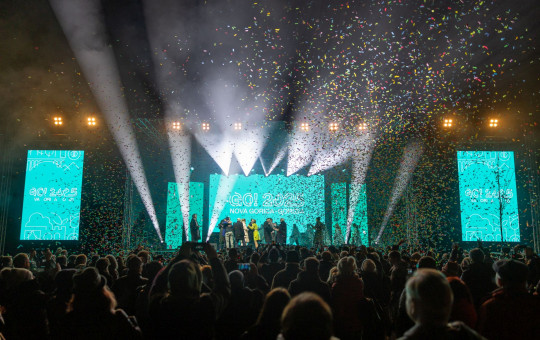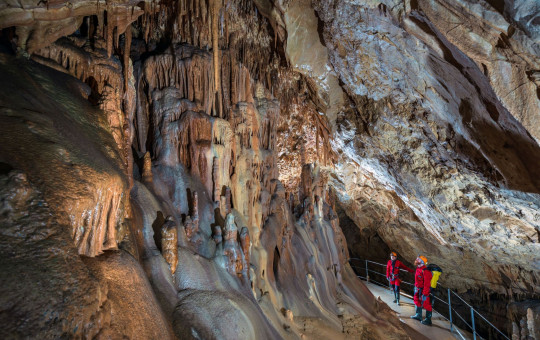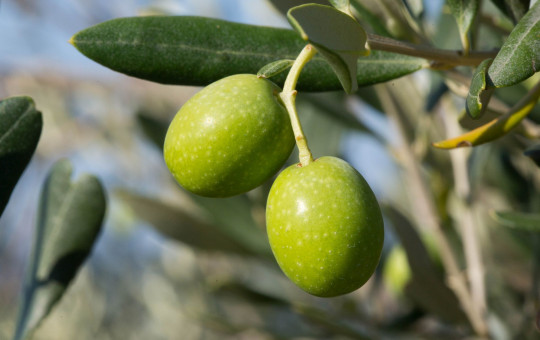Date: 26. June 2025
Time to read: 1 min
With its emerald-blue waters, crystalline clarity, and striking natural elegance, the Savica Waterfall (Slap Savica) stands as one of the most iconic wonders of Triglav National Park. Tucked into the upper reaches of the Bohinj Valley beneath the rugged Komarča cliff, Savica is not just a visual marvel but also a geological and cultural phenomenon.
What makes this waterfall so extraordinary? Its story begins not with what you see, but with what lies hidden beneath the surface. The water that forms Savica originates high in the Julian Alps, in the Triglav Lakes Valley. There, in the embrace of alpine karst terrain, precipitation seeps into porous limestone, disappearing into a labyrinth of underground caves. This subterranean route is lined with narrow siphons and glistening lakes, all invisible to the visitor - and all playing their part in one of Slovenia’s most impressive hydrological systems.
Emerging from this maze, the water bursts forth from a narrow cleft in the cliff face, splitting into two distinct streams. These form the letter 'A' as they plunge in tandem down a 78-metre drop into a moss-covered emerald pool. The larger upper stream is visible to visitors, while the smaller, lower spring - sometimes referred to as Mala Savica - feeds into Lake Bohinj.
Savica is not only visually stunning but also a crucial part of one of the largest and most dynamic karst water systems in Slovenia.
Its unique underground-to-surface route makes it a classic example of karst hydrology, a subject of fascination for explorers, geologists, and poets alike.
In the Footsteps of History and Poetry
Savica's remote location has never kept it out of the minds of great thinkers. In 1807, Archduke John of Austria - an enlightened Habsburg nobleman and admirer of Slovene culture - visited the site to study the geological origins of the Sava River. He was particularly intrigued by the waterfall's role as one of the earliest visible sources of this major watercourse, which flows through Slovenia, Croatia, and Serbia before joining the Danube.
The roaring waters of Savica have also stirred the hearts of artists and poets. Most famously, France Prešeren, Slovenia’s greatest poet, immortalised the waterfall in his 1836 epic poem Baptism at the Savica.
This masterpiece intertwines themes of love, loss, and spiritual awakening, framed against the clash between Christianisation and ancient pagan traditions.
The poem's protagonist, Črtomir, symbolises the broader struggle of a nation seeking its identity in the face of cultural change - a reflection that has resonated with generations of Slovenes.
Even earlier, in the 17th century, the polymath and chronicler Janez Vajkard Valvasor included the waterfall in his monumental work The Glory of the Duchy of Carniola. His admiration for the natural world, as well as his dedication to documenting Slovenian lands, ensured that Savica was acknowledged as a site of both natural and national importance.
Waterfall Savica is more than a picturesque destination - it is a symbolic place where history, science, and poetry converge.
For centuries, it has offered visitors not only the chance to marvel at its beauty, but also to reflect on deeper themes of nature, identity, and continuity.
A Gateway to Bohinj's Wild Heart
No visit to Savica would be complete without venturing further into the magical realm of Bohinj. Lake Bohinj (Bohinjsko jezero), located just below the waterfall, is the largest permanent lake in Slovenia. Surrounded by forested peaks and steep alpine slopes, Bohinj is a haven of tranquillity and raw natural beauty.
The lake is fed in part by the Savica stream, which contributes to its vibrant ecosystem.
Canoeing, swimming, and paddleboarding are popular activities in summer, while winter brings cross-country skiing and snowshoeing in nearby valleys. Yet, despite its appeal to adventurers, Bohinj has retained an atmosphere of serene solitude.
The surrounding villages - particularly Ribčev Laz and Stara Fužina - preserve traditional alpine architecture and culture. Here, visitors can experience authentic Slovenian hospitality, local cheeses, handcrafted wool goods, and age-old legends passed down through generations.
In many ways, Savica is the hidden heart of Bohinj - the dramatic overture to a deeper story of Slovenia’s natural and cultural landscape.
From the thunderous rush of falling water to the still, reflective waters of the lake below, this is a place where Slovenia’s soul feels both ancient and alive.







